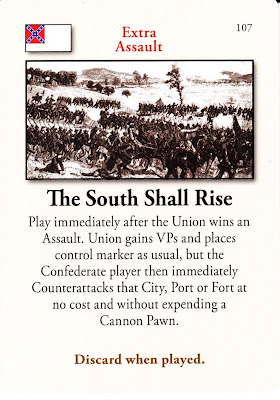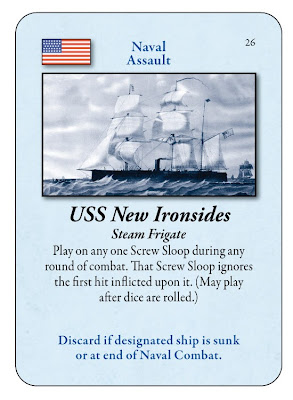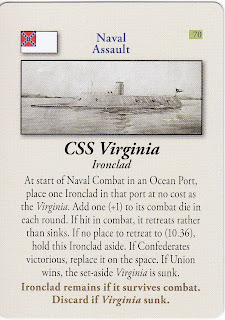The Raiders of Rebel
Raiders - CSS
Shenandoah: The Last Rebel Warrior
Rebel Raiders on the High Seas is a strategic game of the Civil
War which focuses on the role of the navies on the rivers, along the coasts and
on the oceans. While most ships are represented
by generic counters for Ironclads, Blockade Runners, Gunboats, and Screw Sloops
and, of course Raiders, there are cards and corresponding counters for many
individual vessels. This series presents
those cards and offers a glimpse into the history of these storied ships.
The New Bedford Whaling Fleet never recovered from the
ravages of James Waddell and his storied raider, CSS
Shenandoah. This ship,
represented by its own special named counter and card (CSN Card 64) specialized
in hunting whalers – and was in the process of doing so in the Aleutians when
she fired the last shot of the Civil War – in late June, more than two months
after Lee’s surrender at Appomattox. (The board game has a special Whaling Zone where raiders are especially effective to reflect the immense damage done by Waddell and his raider).
For two years Waddell, a 20-year veteran of the U.S. Navy
before going South, scourged the seas, sinking, bonding or capturing 38
ships. He circumnavigated the globe,
leading Union warships on a merry chase from the Atlantic
to the Indian and Antarctic, past New Zealand
into Pacific and finally to the Arctic . No other raider covered so much of the globe,
or showed the flag in so many oceans, seas or ports.
When Waddell learned from his last victim of the war’s end,
he sailed on for another three months, searching for a port where he and his
crew, now deemed pirates for carrying out acts of war after the cessation of
hostilities, could surrender in safety and honor. He found that port in Liverpool ,
on the banks of the Mersey where his ship was
built. On November 6, 1865 Waddell lowered his flag and surrendered
CSS Shenandoah to a British warship, on
condition that he and his men be paroled.
Not only did CSS
Shenandoah fire the last shot of the war, she was the last Confederate
force to surrender.





























